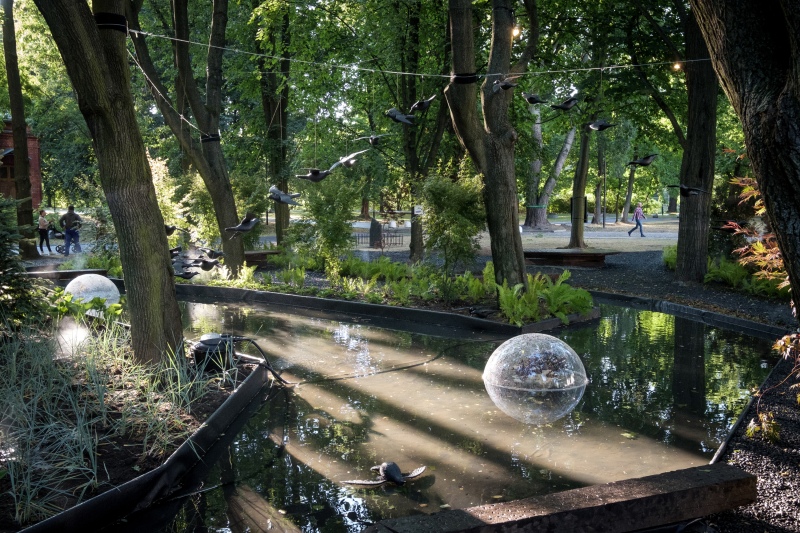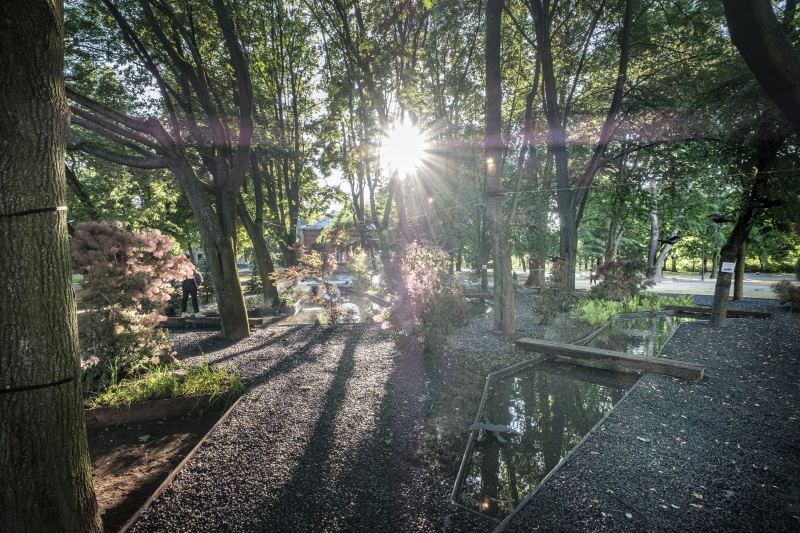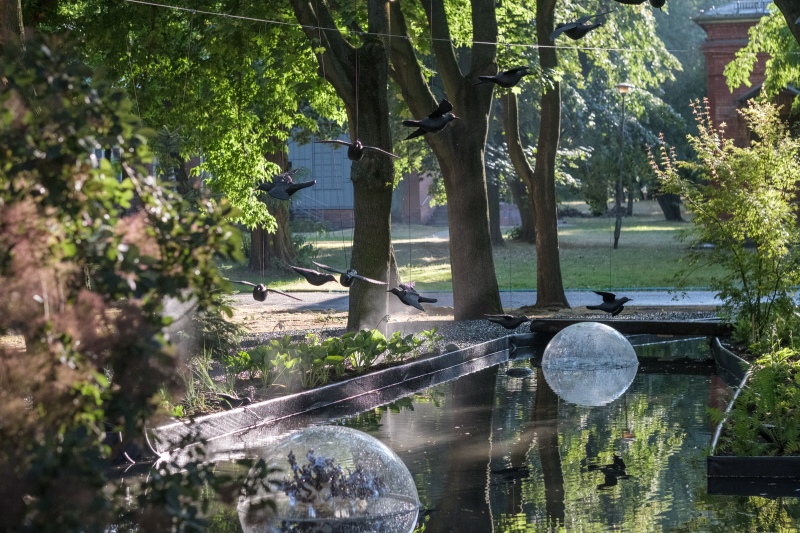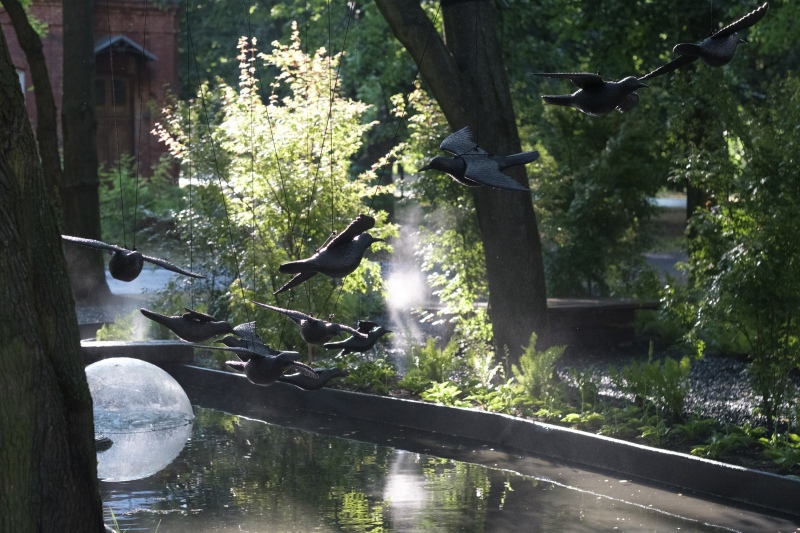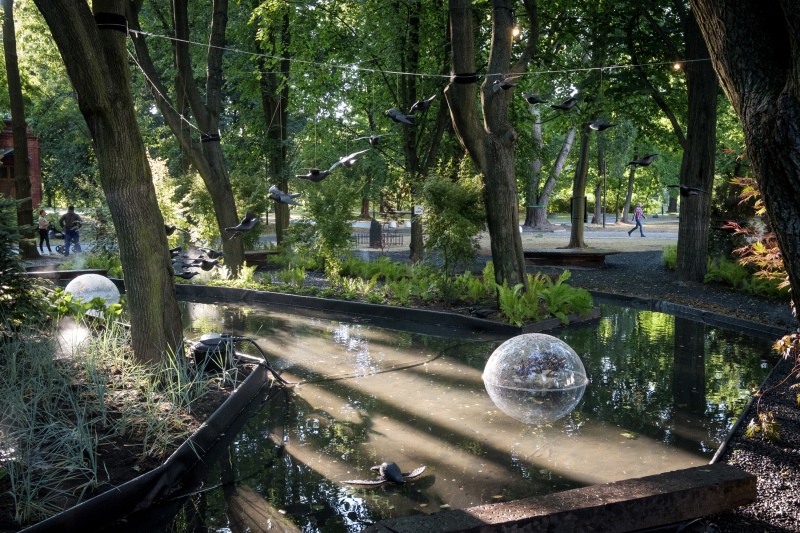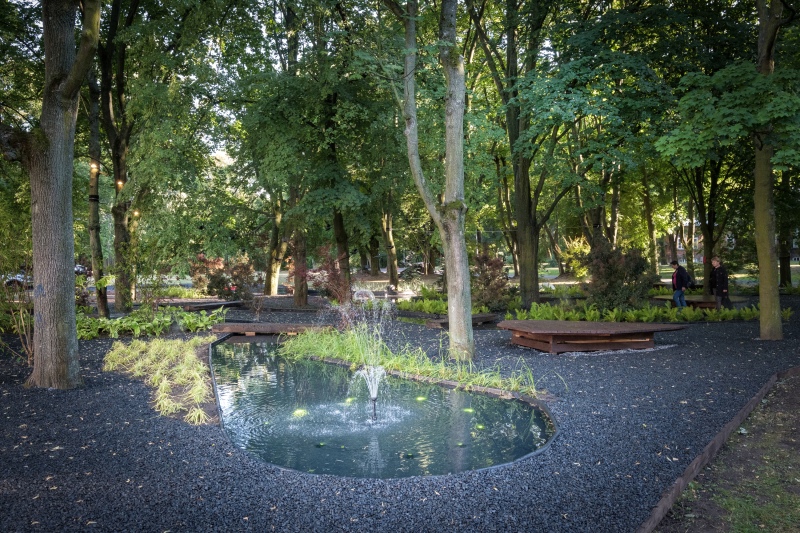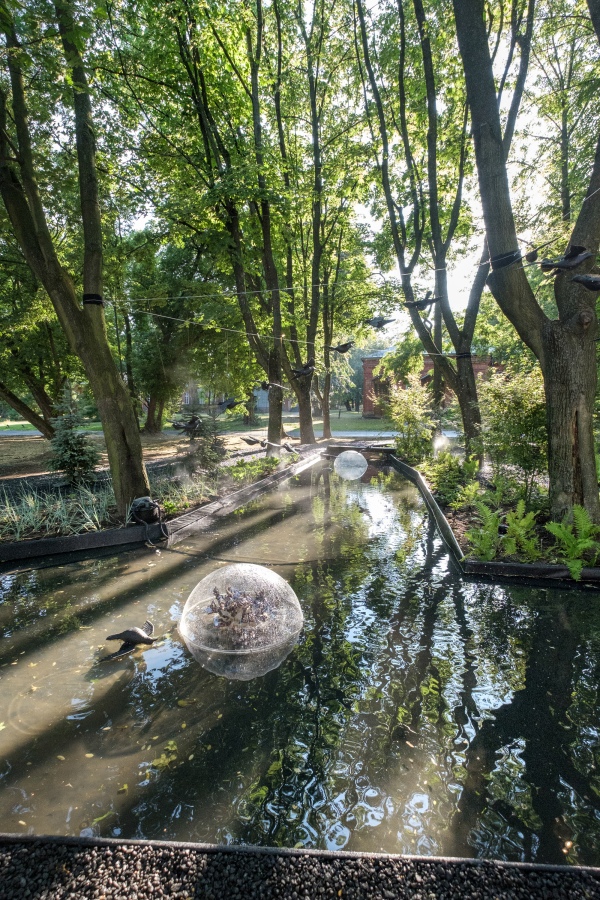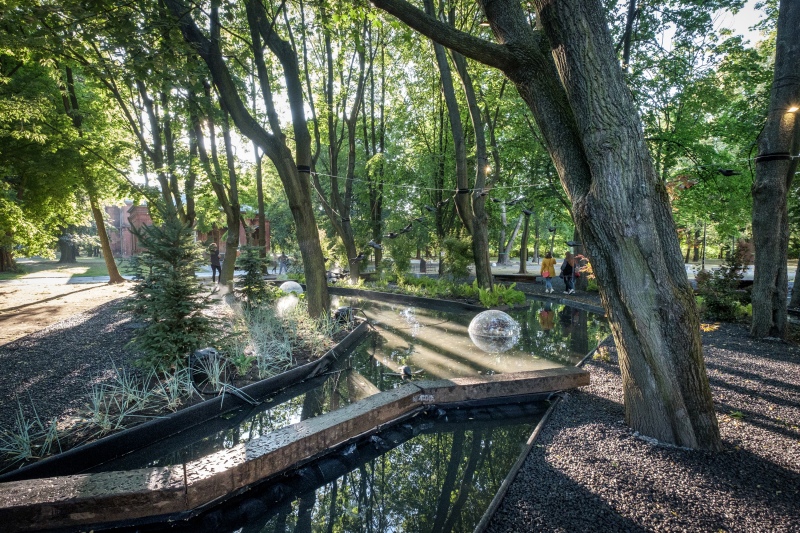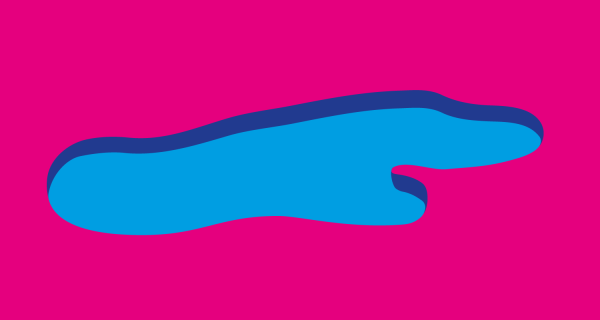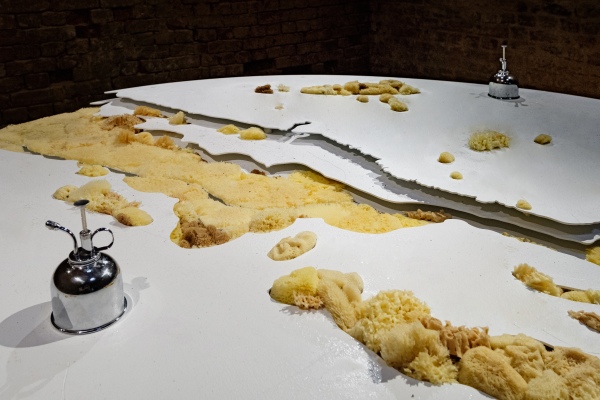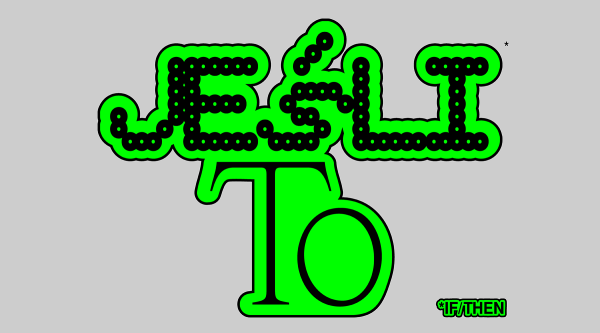Hélène Soulier and Ewa Rudnicka
Dystopia
A splash of darker colour can be seen between the trees – the stretch is overgrown with unusual vegetation. The water basins form a shape that makes it look as if the earth has been scratched by a huge claw – revealing underground springs, cracked pipes or, hidden in the ground, yet another element of the water infrastructure of the Ujazdowski Hospital that once occupied the site. It is likely that, in addition to the ruins from the war, there are also some historic cisterns and wells buried in the park in front of the castle. One of them could even be precisely under a land art installation.
Dystopia is an ambient water garden, but also a disturbing vision of a planet that is dying, buried under plastic. It is a modern cabinet of curiosities, as hinted at by the ’bubbles‘ floating on the water – these contain an inventory of human-generated fossils, water pollution and fungi, the organisms that are quickest to adapt to climate change. ’We are the encyclopaedists of yet another century, taking an inventory of surrounding reality in order to understand it. [...] These things do exist and tell the story of the water in our world, the water of our body, living water and dead water, the remnants of civilisations that let water through,‘ the architects add.
Dystopia is a space that is both highly functional and, paradoxically, inspires pleasant leisure time in the park. Developed during the workshops in 2016, this is another prototype for the development of U–jazdowski‘s surroundings, putting into play the attractiveness of water features in public spaces.
